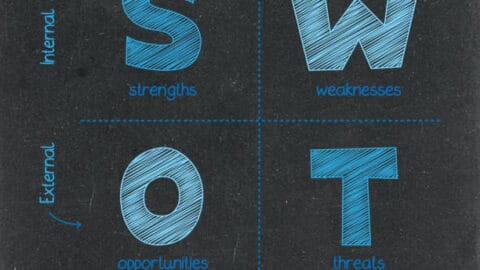Mastering Product Cost Estimation: A Guide to Avoiding Common Pitfalls
In today’s competitive market, understanding and accurately predicting product costs is crucial for businesses aiming to maximize profits and maintain market relevance. Product Cost Estimation involves a complex process of determining the total expenditure required to produce a product, encompassing material, labor, and overhead costs. This article delves into the intricacies of product cost estimation, offering valuable insights and methodologies to enhance business strategies.
Table of Contents
Labor Costs: Balancing Efficiency and Quality
Labor costs, another critical aspect of product cost estimation, refer to the expenses associated with the workforce required to manufacture a product. This includes wages, benefits, and other related expenses. Efficient labor management and productivity assessment are key to minimizing labor costs while maintaining product quality.
Example: In an automobile assembly plant, labor costs involve the salaries of assembly line workers, supervisors, and benefits like healthcare and retirement contributions.
Estimating the cost of a product might sound like a routine task, but it’s a cornerstone of successful development. It forms the basis for pricing, budgeting, and making sound business decisions. Also, TechMagic, as a company that provides software product development service, shares our experience to make the product development journey easier and more effective. In this article, we’ll explore the most prevalent risks and their solutions during product cost estimation.
Trouble with Data Accuracy
Risk: Data is the foundation of any product cost estimate. You need to collect and analyze data from various sources, such as historical records, market research, supplier quotes, industry benchmarks, etc. However, data can become outdated or inaccurate over time due to changes in technology, demand, competition, regulations, etc. If you use outdated or inaccurate data in your estimate, you may end up with unrealistic or misleading results.
Relying on inaccurate or incomplete data can lead to underestimating or overestimating costs, throwing projects off track.
Solution: Devote time and resources to gather accurate data. Also, work closely with all involved parties to ensure every detail is captured correctly. Use historical data, industry benchmarks, and supplier inputs to build a robust database.
What is the Shortcut Key for the Change Case in Excel? – projectcubicle
Design Complexity Matters
Risk: Overlooking the intricacies of product design can result in cost estimates that don’t consider assembly challenges, special materials, or manufacturing intricacies.
Solution: Encourage collaboration between design and development specialists during software product development. Also, promote open dialogue to spot potential hurdles early on. So, apply design principles to optimize designs for cost-efficient production.
Navigating Market Fluctuations
Risk: Rapid changes in the market, like shifting material prices or currency exchange rates, can render initial cost estimates irrelevant.
Solution: Create adaptable cost estimation models. Also, use scenario-based analysis to assess costs under different market conditions. Keep your cost database updated to reflect current market trends and account for uncertainties.
Tackling Process Variability
Risk: Failing to consider process variations can lead to unrealistic cost expectations, causing production delays and exceeding budgets.
Solution: Employ statistical process control methods to understand process variations. Also, integrate statistical analysis into cost estimation models to provide a more accurate cost range. This helps in setting reasonable expectations and planning for contingencies.
Overlooking Hidden Costs
Hidden costs are the expenses that are not directly related to the production of the product, but still affect the total cost. For example, these can include overhead costs, taxes, tariffs, shipping costs, warranty costs, marketing costs, customer service costs, etc. Also, these costs can vary depending on the product type, industry, market, and location. Also, if you neglect to account for these hidden costs in your estimate, you may end up underestimating the true cost of your product and overestimating your profit margin.
Overhead Costs: The Hidden Variable in Product Pricing
Overhead costs, often overlooked, play a significant role in product cost estimation. These are the indirect costs not directly associated with the production process but essential for business operations, such as utilities, rent, and administrative expenses. Accurate allocation and monitoring of overhead costs are vital for precise product cost estimation.
Example: Overhead costs for a small bakery would include rent for the storefront, electricity bills, and the salaries of administrative staff.
Advanced Techniques in Product Cost Estimation
The evolution of technology has brought forward advanced techniques in product cost estimation. Methods such as Activity-Based Costing (ABC) and Just-In-Time (JIT) inventory management are revolutionizing the approach towards cost estimation, offering more accuracy and efficiency.
Activity-Based Costing (ABC): A Precision Tool for Cost Allocation
ABC is an accounting methodology that assigns costs to products based on the activities involved in their production. Also, this technique provides a more accurate reflection of the true cost of production by identifying and analyzing specific cost drivers.
Example: In a manufacturing facility, ABC can help allocate the cost of machine maintenance to products that heavily rely on specific machines.
Just-In-Time (JIT) Inventory Management: Reducing Costs through Efficiency
JIT inventory management is a strategy that aligns raw-material orders with production schedules, thereby reducing inventory costs. Also, this approach minimizes waste and storage costs, contributing significantly to the reduction of the overall product cost.
Example: A retail store using JIT ensures that it orders products just in time to meet customer demand, reducing the need for large, costly warehouses.
Implementing Effective Cost Estimation Strategies
Implementing effective product cost estimation strategies is fundamental for businesses to remain competitive. Also, this involves a comprehensive analysis of all cost factors, continuous monitoring, and adaptation to market changes. Employing the right mix of traditional and advanced techniques is key to achieving accurate and efficient cost estimation.
Example: A smartphone manufacturer regularly reviews its material suppliers, optimizing costs while ensuring product quality.
The Future of Product Cost Estimation
Looking ahead, the future of product cost estimation is poised for further advancements with the integration of technologies like AI and machine learning. Also, these technologies promise to bring unprecedented precision and efficiency to cost estimation processes.
Example: AI can analyze market trends and supplier data in real-time to adjust cost estimations dynamically.
Conclusion
Accurate product cost estimation is a critical component of successful business operations. Also, by understanding and effectively managing material, labor, and overhead costs, and incorporating advanced techniques like ABC and JIT, businesses can optimize their pricing strategies and enhance profitability.
Hello, I’m Cansu, a professional dedicated to creating Excel tutorials, specifically catering to the needs of B2B professionals. With a passion for data analysis and a deep understanding of Microsoft Excel, I have built a reputation for providing comprehensive and user-friendly tutorials that empower businesses to harness the full potential of this powerful software.
I have always been fascinated by the intricate world of numbers and the ability of Excel to transform raw data into meaningful insights. Throughout my career, I have honed my data manipulation, visualization, and automation skills, enabling me to streamline complex processes and drive efficiency in various industries.
As a B2B specialist, I recognize the unique challenges that professionals face when managing and analyzing large volumes of data. With this understanding, I create tutorials tailored to businesses’ specific needs, offering practical solutions to enhance productivity, improve decision-making, and optimize workflows.
My tutorials cover various topics, including advanced formulas and functions, data modeling, pivot tables, macros, and data visualization techniques. I strive to explain complex concepts in a clear and accessible manner, ensuring that even those with limited Excel experience can grasp the concepts and apply them effectively in their work.
In addition to my tutorial work, I actively engage with the Excel community through workshops, webinars, and online forums. I believe in the power of knowledge sharing and collaborative learning, and I am committed to helping professionals unlock their full potential by mastering Excel.
With a strong track record of success and a growing community of satisfied learners, I continue to expand my repertoire of Excel tutorials, keeping up with the latest advancements and features in the software. I aim to empower businesses with the skills and tools they need to thrive in today’s data-driven world.
Suppose you are a B2B professional looking to enhance your Excel skills or a business seeking to improve data management practices. In that case, I invite you to join me on this journey of exploration and mastery. Let’s unlock the true potential of Excel together!
https://www.linkedin.com/in/cansuaydinim/










